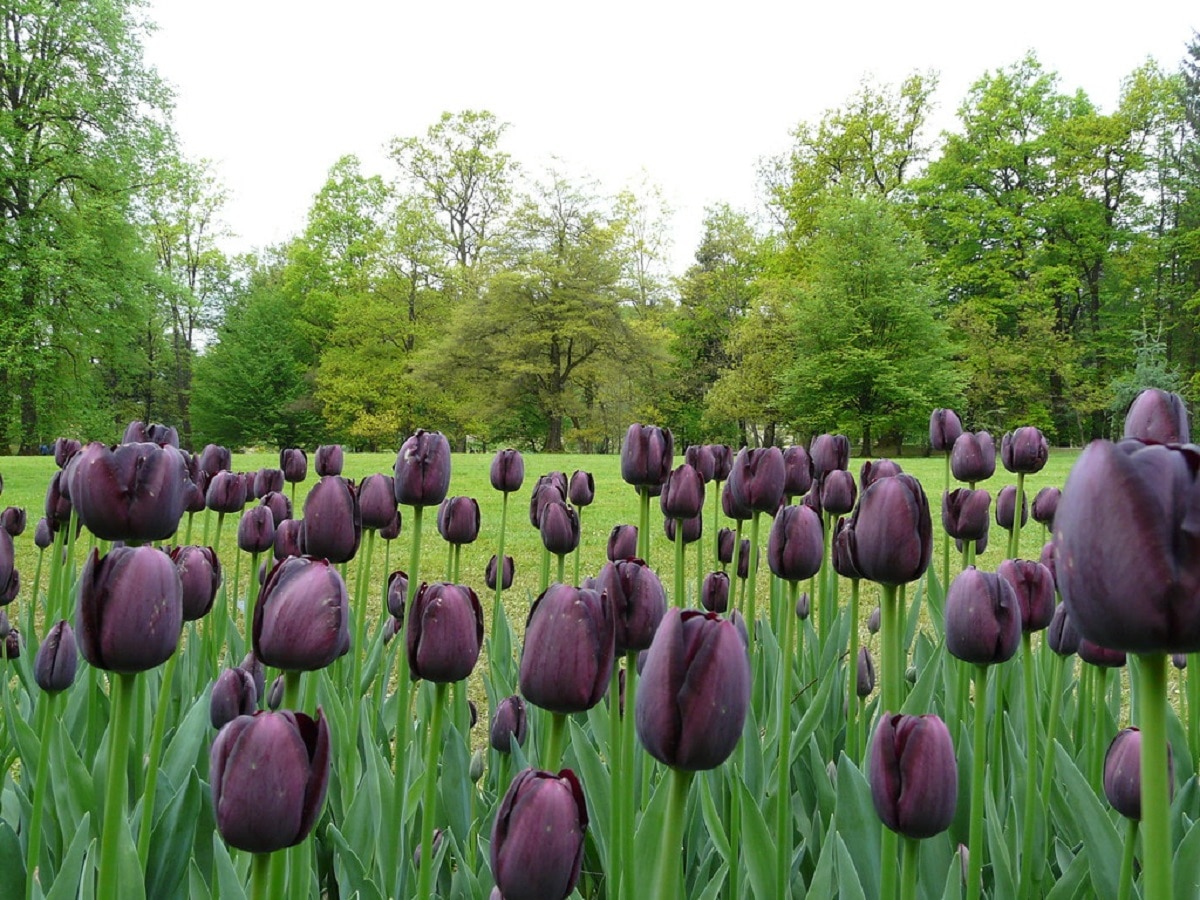
Tulips are native to the mountainous regions of Turkey and Central Asia, where winters are cold and summers cool and dry. There, they are hardy and durable perennials. But when grown in more humid climates, in richer soils, or when the summer is very hot, many hybrid tulips, after fully blooming for a few years, either become smaller or no longer bloom at all.
When are tulips planted? It depends a lot on the region you live in. In cold regions, the ideal time to plant tulips is the first fortnight of autumn. The earth is still warm and the bulbs have time to take root before winter. Elsewhere, they are planted in late September. You should not plant them too late to benefit from their flowering from March, as it would be a waste of time. Better to wait until the end of November.
Where to plant tulips?
Tulips grow best in fertile, well-drained soils, in full sun, but protected from strong winds.. All varieties prefer slightly moist soilbut never wet or puddled. Some alpine species require well-drained soil conditions, otherwise they can suffer from root rot. There are so many varieties and species of tulips that, if you search well, you will surely find a tulip that adapts to conditions in which others cannot survive.
If your soil is clayey or sandy, it is recommended to add organic matter, like manure or compost, before planting the bulbs. This will allow for optimal growth, making it more suitable for growing tulips. Gravel or sand can also help improve very heavy clay soils.. This will offer nutrients for later plants, as well as structure. It is best if the soil is neutral or slightly alkaline. To reduce the acidity in soils with an acidic pH, lime or other products with a similar function should be used.
How to plant tulips?

After tilling the soil and amending it with organic matter and correct its structure and pH, it is time to plant the tulip bulbs with the tip up otherwise it will be very difficult for them to grow and sprout. They must be buried 2 to 3 times their height. If the bulb is planted deeper, it is fine in itself – it will come out a little later. On the contrary, it can be a victim of frost if it is not sufficiently buried. Remember this general rule of thumb for planting bulbs- The bigger the bulbs, the deeper the planting hole needs to be.
Once the hole is made in the ground, insert the bulbs. Then cover with soil and press so that there is no air between the soil and the bulb. Once the hole is covered, it is important to water the new plant. Don’t drown the new bulbs, but without water they won’t be able to grow. To keep the bulbs alive even after flowering, you have to give them organic compost in autumn or a balanced slow-release compost. The bulbs are the plant’s energy storage system throughout the year. The recommended spacing between tulip bulbs is 8 to 15 cm in all directions, depending on the desired effect.
Tulip care

If the winter and fall months are rainy, it is not necessary to water the new plant; otherwise, don’t forget to keep the soil moist to prevent the new bulbs from drying out. When temperatures are near or below freezing, stop watering, as the soil can freeze and frost will damage the bulbs. Conversely, a rainy summer or a poorly adjusted garden watering system could stimulate the growth of fungi harmful to tulips and even cause the bulbs to rot completely. In the summer season, it will only be necessary to water the bulbs in case of prolonged drought.
Even in hot weather, a layer of mulch will help keep the soil hydrated. If you live in an area with warm temperatures, grow your tulips in a semi-shady area rather than in full sun. The organic compost made in your garden or on your terrace will replenish the nutrients in the soil and improve its structure. You can help your newborn bulbs by supplying more compost in spring. when the first leaves emerge from the ground, so that they expend more energy at this critical time for the plant.
After flowering, it is best to leave the leaves on the plant for a few more weeks, so that the bulb can recharge its energy for the next flowering. When the leaves have turned yellow and withered, it is a good time to remove them. Some, however, advocate removing the leaves immediately to prevent the plant from dissipating more energy than it has already expended on flowering. Given the wide variety of tulips on the market, it is difficult to provide rules for all of them. In general, the ones with larger flowers will have to be replanted after a few years, while those with smaller flowers will be able to replant and reproduce well on their own.
